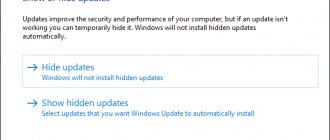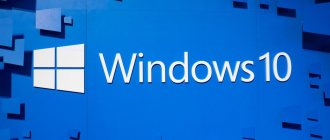In the preparation of this material, we were supported by the Faculty of Java Development of the online university GeekBrains. We have already talked in detail about the advantages of working with Java in the article “Advantages of the Java programming language.” This time we’ll talk about how these advantages affect the use of language in practice.
The main feature of Java is adaptability. Software written on one platform will run on other devices. Java programs run on the Java Virtual Machine, which provides code optimization and memory management. Java also provides scalability - simultaneous processing of multiple requests and multi-threaded program execution. All these language features are, of course, taken into account by the developers.
Java is used in everything from e-commerce websites to Android applications, scientific research and finance, games like Minecraft and desktop applications from Eclipse, Netbeans and IntelliJ.
Web applications in Java
The table below shows that Java is the most popular server-side language among leading technology companies. Compared to other programming languages, Java has better security, adaptability and scalability of applications.
Table illustrating the use of programming languages in large technology companies (source)
Many opensource tools have been created in Java for monitoring and updating data. For example, Netflix uses Java to simultaneously develop infrastructure on Linux and encode video on Windows machines. E-commerce web applications use Java on platforms such as Broadleaf.
How and why do you need to install Java on your computer?
Until recently, the Java architecture was known only to advanced users and developers, but today a lot has changed. As it turns out, many programs are currently written in this free programming language, which provides good prospects for their development. In particular, the client of the famous game Minecraft is written on it, and therefore many users began to be interested in how to install Java on a computer. If you are also interested, we invite you to read this article.
However, before talking about the installation process, one cannot help but pay a little attention to the technology itself. Java is a programming environment and computing environment developed and maintained by Sun Microsystems Corporation. Its peculiarity is that this environment is cross-platform and is used in many mobile devices and even in spacecraft. In short, if you work in some application that uses this technology (and you almost certainly do), then you should definitely install Java on your computer.
Why do you need to install Java?
Considering the prevalence, cross-platform and complete openness of the code, one should not be surprised at the huge number of sites and applications that will not work without this technology. If you do not install Java on your computer, then all this wealth may either refuse to function at all, or will begin to work not entirely correctly. By the way, it is Java that underlies the much-loved Android mobile OS, whose market share continues to increase at an accelerated pace.
We install the application
Before you install Java on your computer, you need to check whether an older version is installed on it. To do this, you will need to run a command line emulation application on your computer. If you are a beginner, then click on the “Start” button, look for the item called “Run” there, and then enter “CMD” (without quotes) in the command field. Press Enter or the OK button.
After this, a command line window will appear in front of you, in which the cursor will blink on a black background. Copy (without quotes) and paste the Java-version command into it using the Copy-Paste command and the mouse (the Ctrl+V keyboard shortcut does not work). After this you can press Enter.
If you already have this program on your computer, then in the first line you will see something like: “Java-version 1.5.0”. If you see a message like this, you don’t have to install anything. Otherwise, you must continue with the installation.
But! The previous operation requires us to launch the command line in administrator mode, and in the way described above it most often starts from a simple user. This doesn't suit us. To be sure to run the utility with administrator privileges, you need to do things a little differently.
To do this, click on the “Start” button again, look for the “Search programs and files” field there, enter CMD there, then in the window that appears with the search results, find (as a rule, only this line will be there) the file of the same name. Right-click on it and select “Run as administrator” from the context menu. All! It's time to install the Java program on your computer.
After downloading the installation file, double-click on it with the left mouse button. The “Installation Wizard” window will appear, in which you need to click on the Install button, after which the installation process will begin. Depending on the power of your PC and Internet capabilities, it may take different times. Finally, click on the Close button.
So you have learned how to install Java correctly!
Embedded Systems in Java
Java was originally developed for embedded devices. Java's motto was “Write once, run anywhere.” As a result, Java has become one of the best languages for developing IoT applications.
Built-in Java modules provide multiple ways to interact with the server, and the sandbox security model architecture provides a high level of data protection. Cinterion Java modules are successfully used in M2M-machine to machine environments, including smart meters, fleet management systems, industrial automation and mHealth.
Where to begin
Java - A textbook for beginner programmers. Suitable for starting, although the textbook itself is written in places in heavy and academic language.
Herbert Shildt - you can take any book that has Java 8 in the title. If you need to start completely from scratch, read "Java 8. A Beginner's Guide."
If you need more theory and non-standard techniques, read "Java. Effective Programming by Joshua Bloch. Suitable for those who already have experience in Java development.
Square
Square helps merchants turn mobile devices into payment systems. Square's software is built using Ruby and C++, but its cash transaction processing stack is based on Java.
Java is truly the only choice when it comes to requirements for a company like ours - with high performance requirements and extreme scalability requirements.
There is no alternative. CTO of the company in an interview with Wired magazine
Virtual machine
Let's say we have some code in Java. For now, it doesn’t matter what the syntax is, how the classes are structured, etc. Just the code. How to do it?
If it were a language like C++, we would need to compile it for the required hardware or operating system. Compile - that is, convert code that we understand into instructions that the processor can understand. Since there are many processors, you will need to compile in different ways. Plus, different operating systems have different arrangements of components, buttons, networking, etc. Before compilation, the program will need to be modified to accommodate these features.
The power of Java is in the JVM (Java Virtual Machine) . This is a program that translates human-readable Java code into processor-readable code. To make the code universal, the developers created virtual machines for each operating system and processors. These machines take into account all the features of the architecture of their platform and know how to process any Java command. This means that the same Java code can be run on a phone, a computer, or anywhere else.
Especially for programmers: we have deliberately simplified the principles of operation of the JRE and JVM and are not talking about bytecode, compilation, etc. Instead, we focused on principles that help us understand how Java works. If you think that due to simplicity we did not describe something important, tell us about it in the comments.
Hadoop
Hadoop, written entirely in Java, is used to distribute computing systems reliably and at scale.
Java offers a good trade-off between developer productivity and runtime performance. Developers benefit from a simple, powerful, secure language with a wide range of high-quality libraries.
Apache Hadoop creator Doug Cutting
Where can I run Java code?
Therefore, you can run Java code anywhere, for which the JVM, that is, the Java virtual machine, has already been developed. For example:
- ultra-powerful servers,
- computers,
- smartphones,
- push-button phones,
- robots and microcontrollers such as Arduino, Raspberry Pi and many others,
- fitness bracelets,
- GPS trackers,
- smart watch,
- smart TVs, refrigerators, microwaves, kettles and other home gadgets,
- smart cards for access to premises.
Imagine this situation: you wrote a Java program that monitors the free space on the disk, and as soon as it becomes less than 20%, it displays a message saying, delete unnecessary files. Now you can run this program wherever there is a JVM. She will figure out the code herself, understand which processor she is doing this for, and run your program. As a result, the same code will monitor the free space on a computer, feature phone, smartphone, tablet, smart microwave or home alarm.
Java technology
Java is a special programming language in which video games and numerous applications are written. Thanks to Java software, people can play online games, view 3D images, calculate interest on loans, and communicate with people around the world. Applications written in this programming language that can be accessed directly from the browser are called "applets". Many large companies use Java applets for e-commerce systems and intranet applications. There are currently over 9 million software developers working with the Java platform. It is used in all major industry segments. It is especially widely used in computers and networks. This popularity is due to the efficiency, versatility, portability of platforms and security of the technology, which makes it the best choice for network computing. To understand why Java is needed, just look at your PC or mobile phone. Only through this program can you play various games, since most of them were written on its platform. This program is also used in all Blu-ray players. This technology is used to operate set-top boxes, lottery terminals, printers, web cameras, medical devices, car navigation systems, parking payment machines, etc.
Advantages of the Java Program
The main advantage of Java is that on its platform you can write software that can later be run on almost any other platform. In addition, it allows you to create programs that run in a web browser and have access to web services. As a rule, when asked by the user, is Java needed? You can answer with an example that without this technology it would be impossible to buy anything on the Internet; many surveys are developed on its platform. And without this technology one could forget about multifunctional and effective applications for mobile phones. Java has left Apple and Android far behind as it is used in 3 billion cell phones. Now you know everything about the Java program, why this technology is needed, and how it can be successfully used.
Java is the technology that allows you to create documents, play games, get advanced website features, and do other fun and useful things using desktop and web applications built on Java. Java Update will automatically check for updates and alert you when exiting new version of Java. Java updates are critical to ensuring you can continue to use your favorite applications safely and effectively.
Disabling Java updates using group policies
By default, Java installed on a computer periodically checks for updates and reminds the user to update, regardless of whether he is an administrator on the computer or not. In small organizations with a small fleet of computer equipment, this is probably not a significant problem, but in large networks, a pop-up window asking to update Java and a UAC window that requires administrator rights to do this can create inconvenience for users and an additional barrage of technical support requests. In this article, we will show you how you can disable Java update checking, which will prevent users from seeing the following pop-up window:
Java Update Available. A new version of Java is ready to be installed.
Let me start with a word of caution. Disabling updates in third-party programs does not free you from the need to keep them up to date by periodically installing updates or new versions of the software. After all, holes in third-party software are holes in your network. To update third-party (non-Microsoft software), for example, we use SCCM.
Disabling Java update notifications is quite easy. All Java update and toast settings are stored in the registry key HKEY_ LOCAL_ MACHINE\ SOFTWARE\ JavaSoft\ Java Update\ Policy \. The EnableJavaUpdate key is responsible for the automatic Java update functionality (1—auto-update is enabled, 0—update is disabled).
The above key applies to 32-bit Java running on x86 OS, as well as 64-bit Java running on x64 OS. If you are using a 32-bit version of Java on x64-bit Windows, the above applies to the registry key HKEY_ LOCAL_ MACHINE\ SOFTWARE\ Wow6432 Node\ JavaSoft\ Java Update\ Policy
Of course, this key can be corrected on a PC manually, but it is better to distribute it en masse using group policies. You can manage the contents of the registry, for example, using Group Policy Preferences. Create a new policy or take an existing one and go to the section: Computer Configuration -> Preferences -> Windows Settings -> Registry. Right-click to open the context menu and select New > Registry Item.
Set the following options:
Action: Update Hive: HKEY_LOCAL_MACHINE Key Path: SOFTWARE\JavaSoft\Java Update\Policy Value name: EnableJavaUpdate Value type: REG_DWORD Value data: 00000000 (eight zeros)
After applying this policy to workstations (automatically or using gpupdate.exe), you can verify that the value of the key in the registry has changed.
Additionally, if you open the Java Control Panel from Control Panel, you will see that the Update tab is missing.
This guide to disabling automatic Java updates works for Java 6 (including Update 18, Update 33) and Java 7. If this instruction does not work for new versions, please let me know, I will try to figure it out and update the article.
You can read about the Adobe Flash update system here.
Why is Java needed?
Java is a free platform that is designed to run applications written in Java of the same name. Many programs and web applications run in Java. What is this platform?
The JRE (Java Runtime Environment) is most often installed on the computers of ordinary users. Roughly speaking, this is a container within which Java programs are launched and run. It provides security, stability and environment for some of the software on your computer.
Previously, Java was actively used to write “applets” - small applications that run directly in the browser. For example, a calendar, guest book or online chat. Currently, JavaScript is used for these purposes, which does not require Java installed. But still, many sites on the bottomless Internet operate on this technology. And if you don't have Java, then such sites will not work correctly and you will not be able to interact with them. The site does not respond to your actions? Perhaps the reason lies in the lack of Java.
More widely, Java was and is used to create desktop applications. Therefore, some programs simply cannot work without Java installed. For example, the popular game Minecraft runs entirely inside a Java virtual machine. And if you are involved in programming, then some IDEs (software development environments) also require Java to run.
Real Java Applications
There are many applications for Java, from e-commerce sites to Android applications, from scientific to financial applications such as trading systems, from games such as Minecraft to desktop software such as Eclipse, Netbeans and IntelliJ, from open source frameworks to J2ME applications, etc. Let's take a closer look at each of them.
Android applications
If you want to see where Java is used, you don't have to look far. Just take your Android phone, absolutely all applications are written in Java, using Google and Android APIs, which are similar to the JDK. A couple of years ago, Android provided the necessary capabilities, thanks to which today many Java programmers are Android developers. By the way, Android uses a different JVM and a different and different layout method, but the code is still written in Java.
Server Applications in Financial Services
Java is widely used in the financial sector. Many global investment banks, such as Goldman Sachs, Citigroup, Barclays, Standard Charted and others use Java to write front-end and back-end office electronic systems, regulatory and confirmation systems, data processing projects and some others. Java is primarily used to write server applications, most of them without any user interface, that receive data from one server, process it and send it on. Java Swing was also popular for creating thick-client interfaces, but now C# is quickly taking over the market in this area, and Swing is already running out of steam.
Web applications
Java is also widely used in e-commerce and web applications. A huge number of RESTful services have been created using Spring MVC, Struts 2.0 and similar frameworks. Even simple applications based on Servlet, JSP and Struts are quite popular in various government projects. Many web applications of government, health, insurance, education, defense and some other departments are written in Java.
Software
Many useful software and development tools are written and developed in Java, such as Eclipse, IntelliJ Idea and Netbeans IDE. It seems to me that this is also the most used application written in Java. There was a time when Swing was very popular for creating "fat clients", mainly in the financial sector. Today, Java FX is gaining more and more popularity, but it is still not a replacement for Swing, and C# has almost completely displaced Swing from the financial field.
Trading Applications
Third-party trading applications, which are also part of the larger financial services industry, also use Java. Popular applications such as Murex, which are used in many banks, are written in Java.
J2ME applications
Despite the fact that the emergence of iOS and Android has practically destroyed the J2ME market, there are still a huge number of cheap phones from Nokia and Samsung using J2ME in the world. There was a time when almost all games and applications available on Android were written using MIDP and CLDC, which are part of the J2ME platform. J2ME is still popular in media such as Blu-ray, cards and set-top boxes. One of the reasons WhatsApp is so popular is that it is also available on J2ME.
Embedded Systems
Java is also extensive in the field of embedded systems. You can see what the platform is capable of, you only need 130 KB to use Java (on smart cards and sensors). Java was originally developed for embedded systems. In fact, this area was part of Java's initial "write once, run anywhere" campaign, and it appears to be paying off.
Big Data
Hadoop and other big data technologies use Java in one way or another, such as Hbase and Accumulo from Apache, or ElasticSearch. Although Java does not dominate this area, since there are technologies like MongoDB, which are written in C++. Java has the potential to gain a larger share of this growing space if Hadoop or ElasticSearch expands.
High Frequency Trading Spaces
Java has improved its performance and with modern JITs it is able to provide C++ level performance. For this reason, Java is also popular for writing high-performance systems, because although the performance is inferior in comparison with the native language, you can sacrifice security, portability and reliability for greater speed and it only takes one inexperienced C++ programmer to make the application slow and unreliable .
Scientific applications
These days, Java is often the default choice for scientific applications, including natural language processing. The main reason is that Java is more secure, mobile and reliable and has better parallelization tools than C++ and other languages. In the nineties, Java was quite popular on the Internet thanks to applets, but over the years, applets have lost their popularity, mainly due to various security issues. Desktop Java and applets are pretty much dead these days. Java is the default darling of the software industry, and is widely used in finance, investment banking, and e-commerce. Everyone who learns Java has a bright future. Java 8 has only strengthened the belief that Java will continue to dominate the development landscape for years to come. In the comments to the article, they questioned the real use of Java, due to the abundance of financial examples in the article itself, and wondered whether Java has a future in desktop development, and whether it would be better to learn C#? Here are some counterarguments: There is no point for a Java developer to learn C# as they are similar language but just for different technical stack, instead you should learn Python, Ruby or Perl.
Scripting language are very good for small tasks. There is no point for a Java developer to learn C# since they are similar languages but for different areas.
Instead, it's better to learn Python, Ruby or Perl. Scripting languages are good for small tasks. Java is actually used EVERYWHERE, it"s in your phone, it"s in your cable"s settop box, it"s in your credit card, it"s on the server which you are currently connected to, it"s on the browser you are currently using it.
Java is the most ubiquitous language ever created. Java is actually used everywhere, it's on your phone, on your set-top box, on your credit card, on the server you're currently connected to, in the browser you're currently using.
Java is the most ubiquitous language ever created. Also in the comments are links to a couple of articles, namely: The Second Coming of Java and Employers Want Java Knowledge Like Nothing Else. If they express their desires, we can translate them too. PS: I ask you to evaluate the translation, make comments, point out errors, because I have a desire to translate and want everything to be at the appropriate level.
Translation of the original article
If you see Java in the list of installed programs, but don’t know why it is needed, this article is for you. Many users ask why Java is needed on a computer or laptop
how it was installed and what it does. Let's figure it out.











